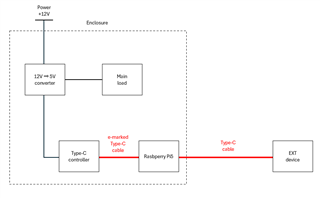Other Parts Discussed in Thread: , TPS25751, TPS25751EVM
Tool/software:
I am planning to create a dedicated UPS power supply circuit for the Raspberry Pi 5 that incorporates the above PD controller.
For the intended application, I am considering pure power source operation without any data transmission.
Currently, I am developing using the TPS25750EVM evaluation kit and the TPS25750 Application Customization Tool software.
However, since this development board uses the TPS25750D, I understand that it does not support 5V/5A power delivery.
I believe that using the TPS25750S, which includes an external power path, might make 5V/5A output possible.
That said, since the TPS25750 Application Customization Tool only supports configuration up to 5V/3A,
I assume I will need to create a custom .bin file separately.
For now, I would like to confirm the following points:
Is it possible to supply 5V/5A using the TPS25750S?
Are there any specific devices or tools required to write a custom .bin file directly?
Are there any other ICs besides the TPS25750S that would be suitable for this application?
Please note that I am a beginner in both English and PD power circuit design,
so I apologize if there are any inaccuracies in my inquiry. Thank you very much for your support.


